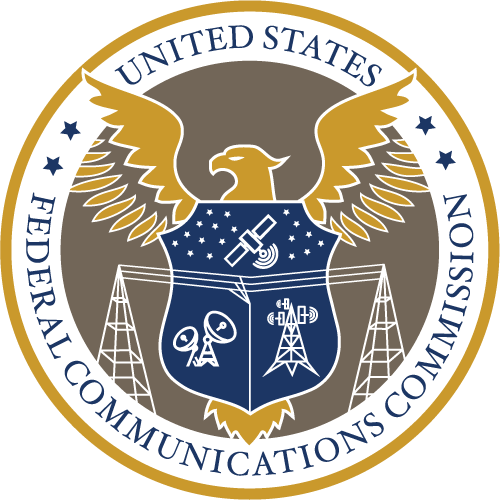-
Fraud Mitigation & Data Integrity
Essential tools for trust, integrity, fraud prevention & regulatory compliance.
- Driving Confidence in Telecom Through the Trust Framework
- RealNumber DNO – Prevent Fraud on Voice & Text
- RealAgent – Avoid Potential TCPA Violations
- RealBrand – Reinforce a Phone Number’s Identity & Reputation
- Global Number Range – Gain Authoritative Number Intelligence
- Live Status – Query Real-Time Mobile Number Intelligence
- Number Portability Query – Access Accurate Local & Global Number Portability Details
-
Routing Optimization
Gain access to authoritative routing data to create the ultimate routing intelligence for your traffic.
-
Number Administration
Empowering connectivity as the FCC appointed administrators for critical numbering registries.
-
Connected Device Intelligence
Gain total transparency to your IoT assets’ current state and vulnerabilities.
Insights
Robotexters Beware – FCC Takes Strong, New Stand Against Spam Text Messaging
Missing packages that don’t exist; confirmation of payments that didn’t happen; links to shady websites; and truncated ‘wrong number’ messages from strangers. These scam robotexts are a part of everyday life for too many of us. I’m asking my colleagues to join me in adopting the first FCC rules to focus on shutting down scam texts.
 Last month, Federal Communications Commission (FCC) Chairwoman Jessica Rosenworcel issued this challenge.
Last month, Federal Communications Commission (FCC) Chairwoman Jessica Rosenworcel issued this challenge.
And at the March 16th FCC Open Commission Meeting, the response was loud and clear: CHALLENGE ACCEPTED.
That said, with all the positive things that transpired, for many, there are still a lot of questions that need answering….
What is one of the biggest perils of robotexting?
The frequency of robotexts on consumers’ mobile phones has risen exponentially in recent years. In fact, according to the FCC’s Mika Savir, Attorney Advisor, Consumer Policy Division, Consumer and Governmental Affairs Bureau, text message scams have become so pervasive that complaints about robotexts to the FCC have grown by a staggering 500% since 2015.
Unlike fraudulent phone calls (where one can screen and ignore a call, send it to voicemail or otherwise not pick up), reading text messages tends to be a visceral act that isn’t easily put off (hence the exceptionally high open rate!). Even worse, robotexters are increasingly using SMS to install malware on unsuspecting consumers’ phones, as well as data mine sensitive, personal information such as social security numbers, bank account details, etc.
Why has the prevalence of robotexting increased as much as it has?
To start, while efforts such as STIR/SHAKEN, tracebacks, comprehensive Do Not Originate (DNO) lists, like RealNumber DNO, and the Reassigned Numbers Database (RND) have been able to mitigate robocalls through penalties, heavy fines and widespread industry reform, up until now, most (if not all) of the regulations that have been passed addressed fraudulent phones calls exclusively and made little or no mention of text messaging. The result? Robotexters have shifted their nefarious endeavors away from voice networks and onto mobile networks.
At the March 16th Open Commission Meeting, however, robotexters were put on high alert, as the FCC not only adopted the first (of what is certain to be many) substantial regulatory roadblocks for scammers; the FCC likewise drew a line in the sand and alluded to the fact that scammers could – and should! – expect more Reports and Orders that curtail robotexters’ depraved and illegal activities.
So, what exactly was ruled at the meeting?
Well, first and foremost, the FCC didn’t simply SUGGEST that mobile service providers block text messages that are highly likely to be illegal, going forward, the FCC will REQUIRE carriers to block these types of messages. This includes texts from numbers that are invalid, unallocated and unused that would never/don’t send text messages (i.e., government agencies, etc.).
What about concerns that valid senders might inadvertently get put on the “blacklist”?
The FCC hardly overlooked that possibility – in fact, the Report and Order conspicuously included a rule that requires mobile carriers to have a designated, single point of contact (POC) that consumers can reach out to in instances of excessive and/or unnecessary blocks, wrongful and/or mistakenly blocked numbers and so on and so forth.
What does the future of text message spam prevention look like?
The March 16th Open Commission Meeting demonstrated a significant step towards adopting regulations that specifically target robotexting. And as for the future? Well for one, in the very near future (as proposed during the meeting), the FCC is asking the public to provide feedback on ways that the FCC can not only deter the practice of spam text messaging; but take it one step further and eliminate it altogether.
As its next step, the FCC encouraged the public to socialize and provide comment on a proposal to extend the mandate that requires voice service providers to “reference a ‘reasonable’ Do Not Originate list when routing calls” to text messaging.
My closing thoughts….
While there is still a lot of work to do, the March 16th Open Commission Meeting made a marked stand in the charge to eradicate spam text messaging. More notably perhaps, if I am to be asked, the decision helped to underscore Chairwoman Rosenworcel’s stated end goal:
“I believe the FCC will need to focus on preventing robotexts in the first place, rather than just trying to punish those responsible for them after the fact.”
Stay Connected
Stay in touch! Sign up for our monthly newsletter.
Need to reach us sooner? Call, text, or email us at:
844.HEY.SOMOS help@somos.com